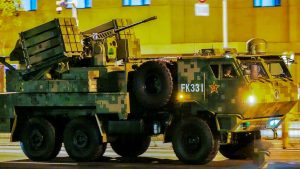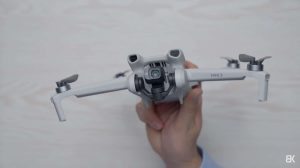SiFly Q12 Electrically Powered Drone Sets Unprecedented Endurance Record
The SiFly Q12 drone, known for its electric power source, has now established a remarkable record in endurance, setting a new global standard for commercial multi-rotor UAVs. In August 2025, this innovative quadcopter secured a Guinness World Record by achieving a nonstop flight of 3 hours and 11 minutes, outmatching the previous endurance record for electrically powered drones by nearly an entire hour. This milestone represents a significant evolution in the realm of drone technology and operations.
Why is the SiFly Q12’s Record So Extraordinary?
Traditionally, commercial drones have required operators to balance payload, endurance, connectivity, and range. The Q12, however, has been meticulously engineered to overcome these compromises. Its impressive performance at international competitions and field tests showcases its capabilities:
- 3 hours, 11 minutes of continuous flight (Guinness World Record)
- Forward flight mode: Lasts up to 3 hours
- Hover mode: Sustains 2 hours
- Single-charge range: Can travel up to 90 miles (145 km)
- Payload capacity: 10 pounds (4.5 kg), which is 6 times the industry standard
- Noise levels: Up to 10 times quieter compared to other industrial drones
- Connectivity: Built-in 5G for real-time data transfer, along with backup options, enabling cloud-based missions and immediate situational awareness
For comparison, the 2021 BARQ quadcopter from the UAE could carry only a lighter payload over 11 miles, whereas the SiFly Q12 outperformed with a 26-mile journey and a 10-pound payload during the Uncrewed Triple Challenge trials. This achievement has more than doubled previous distance records, tripled maximum endurance and carried six times the weight.
SiFly Q12 Leads Long-Range Commercial Drone Innovation
Record-Breaking at the Uncrewed Triple Challenge & Guinness Confirmation
During the Uncrewed Triple Challenge (UTC) in Michigan in May 2025, the Q12 successfully navigated a 63-mile autonomous multi-segment course, traveling 26 miles per battery on rugged, windy terrains with gusts up to 32 mph, all whilst carrying a 10.6-pound payload. This feat was achieved much beyond typical delivery drone benchmarks. Notably, SiFly completed the entire air mission, further proving its potential for commercial use in real-world conditions.
A few months later, in California’s Salinas Valley, the Q12 secured a Guinness World Record through a three-hour and 11-minute flight. This marked a new gold standard in the sector of multi-rotor electric drones.
Real-World Implications of Advanced Endurance
1. Search & Rescue and Emergency Response
- Sustainable coverage: Aerial searches across extensive wilderness or disaster areas without frequent battery changes.
- Heavy-duty payloads: Ability to deliver medical supplies, survival gear, or communications equipment to remote locations.
- Autonomy: AI integration reduces pilot burden, focusing on strategy rather than battery management.
In simulated scenarios like wildfire evacuations, a Q12 drone offered continuous aerial surveillance and carried supplies between isolated sites and command centers.
2. Infrastructure and Industrial Inspections
- Efficient surveying of long infrastructures like pipelines or power lines in a single battery session, reducing operational expenditure.
- Eliminates delays from battery replacements, enhancing operational efficiency for drone fleets.
For instance, in California’s Salinas Valley, Amaral Ranches used the Q12 for ongoing agricultural oversight, sending live crop health data to the cloud, thus eliminating blind spots and reducing the need for manual field inspections.
3. Law Enforcement & Public Safety
- With the Q12’s NDAA compliance, agencies can maintain continuous surveillance or rapid response over city sectors using a single drone.
Agencies have reported operational cost reductions of up to 90% per square mile by lessening the frequency of launches and battery changes for consistent aerial patrols.
4. Logistics and Drone Delivery
- Facilitates transportation of medical, industrial, or urgent supplies across remote landscapes or disaster-affected zones, previously challenging for electric UAVs.
Comparing SiFly Q12 to Other Industry Giants
| Parameter | SiFly Q12 | DJI Mavic 3 Enterprise | DJI Matrice 350 RTK |
|---|---|---|---|
| Flight Time (forward) | Up to 3 hours | 45 minutes | 55 minutes (no load) |
| Range (max) | 90 miles | 9 miles | ~15 km radio link |
| Payload Capacity | 10 pounds | Not specified | ~6 pounds |
| Quieter Operations | 10x quieter | Not specified | Not specified |
| NDAA Compliance | Yes | No | No (Chinese-made) |
| Connectivity | 5G cloud-ready | Not specified | Not specified |
The Q12 not only excels over DJI’s models in flight specifications and payload but also provides a domestic NDAA-compliant solution—beneficial for government and security applications.
Technological Innovations Driving Records
- All-Electric VTOL Design: Combines hover efficiency for surveillance with fixed-wing efficiency for extended missions.
- Layered Autonomy & AI: Advanced autopilot systems enable stability in windy conditions and im-provisational path adjustments.
- Noise-Reduction Propulsion: Almost silent motors ideal for urban or wildlife operations where noise is a concern.
- 5G & Edge Computing: Facilitates live data transmission, cloud analysis, and rapid situational response.
Upcoming Regulatory and Market Transformations
The FAA’s proposed regulations, like the *Part 108 regulation*, aim to further expand BVLOS operations. Brian Hinman, SiFly’s CEO, envisions the Q12 as well-positioned to introduce new business models, such as persistent city air patrols, national-level pipeline inspections, or flexible medical supply transit in rural areas.
As a $35-billion industry, the drone sector sees opportunities for UAVs like the Q12 to take on jobs traditionally handled by helicopters, providing similar performance with reduced cost, lesser maintenance, and a smaller environmental impact.
The People Behind the Q12
Founded by Brian Hinman, SiFly is a Silicon Valley enterprise that emerged from stealth mode in 2025, quickly establishing itself as a formidable alternative to large players like DJI. The team comprises aerospace engineers, prior first responders, and seasoned drone pilots, combining technical expertise with a clear understanding of practical challenges users face.
For the first time ever we watched a drone quietly cover our entire property—fields, fencelines, equipment rows—without stopping or losing signal. That’s a game-changer for big farms like ours.
This customer testimonial highlights the Q12’s value to industries. Moreover, SiFly engineers suggest that to optimize Q12’s flight time, operators should plan hybrid missions that switch between hovering during detailed inspections and forward flight for longer stretches while utilizing real-time 5G telemetry.
Why This Milestone Stands Out
- Eliminate battery worries: Three-hour flights mean less downtime for recharging.
- Finally, a homegrown rival to DJI: High specifications combined with compliance with security standards.
- Unified platform for diverse operations: Shift from multiple drone types to a more integrated approach.
- Shifting regulations and contracts: The Q12 paves the way for new, economically viable missions.
The Future: A New Era of Persistent Flight
The day the SiFly Q12 achieved its endurance record, it was about more than just a longer flight—it signified a shift in perception about drone capabilities. With pending regulatory changes and expanding utilization, this achievement marks the onset of transformative times. The Q12 represents an engineering triumph and a message to industries and society at large: the possibilities for drones have expanded dramatically.
Whether you’re an industry expert with an eye on persistent surveillance, a first responder requiring all-night aerial coverage, or just a drone enthusiast, the SiFly Q12 is leading us into a new altitude.













